Bulk epoxy floors: an overview of installation technology + environmental issues
Epoxy self-leveling floor is a sturdy, unified construction, absolutely harmless to health and easy to clean. Yes, this is exactly the beautiful coating that is increasingly found in restaurants, airports and luxury apartments. In addition, due to its environmental friendliness, this coating is quite popular in child care facilities and hospitals. Solid pluses! Do you dream to fill such a floor in your own apartment? Now we will tell you how to do it.
Bulk epoxy floors are considered to be one of the most resistant to moisture and the effects of aggressive chemicals: acids, alkalis and solvents. Such floors can be washed with hot water and almost any detergent, why they prefer to arrange in various laboratories, rooms with high humidity and in residential buildings.
Epoxy self-leveling floors are also valuable for their unique maintainability: in the case of a deep scratch or crack, just a brush stroke is enough, while polyurethane ones will have to tinker with.
Let's note the equally important advantages of epoxy bulk floors:
- Simplicity of operation. An epoxy floor is a perfectly even base, which is no harder to care for than a lacquered parquet.
- Resistance to temperature extremes. With a calm soul, you can make such a floor in the bath: neither heat, nor steam, nor the unheated winter months will damage such a coating.
- Lack of joints. More dirt will not get anywhere.
- Wear resistance. The durability of this coating will surprise you.
- Variety of colors and features an exclusive design design.
And the biggest advantage of the epoxy bulk floor is that it no longer needs to be waterproofed additionally - this is already a kind of waterproofing!
But keep in mind that dismantling such a floor is practically impossible - it’s much easier to make another layer directly on it.
Content
Myths and truth about the environmental friendliness of epoxy floors
It turns out that among the inhabitants there really is such a fear, because of which many refuse to make such a beautiful flooring at home. But in fact, among all the thermosetting resins that we breathe every day (just leaving the house), epoxies are the most harmless. In the solid state, they are absolutely environmentally friendly. Of course, heating is just as undesirable for them as it is for a regular natural tree, which releases tar under such conditions.
Well, let's list exactly which possible fumes today scare some and give rise to many myths:
- Epichlorohydrin It irritates the skin and mucous membranes, causes bronchitis, has a bad effect on the vascular system.
- Anhydrides. May cause severe choking.
- Toluene. If you breathe it for a long time, then the process of hematopoiesis will be disrupted.
- Hexamethyldiamine. If it gets into your eyes, it will reach necrosis.
- Polyethylpolyamine. Will get on the skin - there will be very unpleasant sensations.
But all these volatile substances in the amount of 3-5% stand out only when applying floor layers! During the polymerization, they completely come out, and in exactly a week they are already not even a trace in the room. That's when the epoxy floor is considered 100% environmentally friendly and safe even for children. Before that, you must protect your eyes, lungs, and skin.
Yes, polymer floors do not consist of natural materials, but in terms of their sanitary and hygienic characteristics they are very close to them. You can always find out about this from quality certificates. Although it is worth noting that among the epoxy floors there are also brands that can fully guarantee safety even during the work itself.
Mixtures of self-leveling floors differ in species, their respective characteristics and appearance. Our article will help you understand the material:https://floor.expertexpro.com/en/pol-pokritiya/nalivnoi/kakoj-nalivnoj-pol-luchshe.html.
How to fill such a floor yourself? The essence of the process is extremely simple: first a base is prepared, which should be firmly grasped with the base layer, and epoxy is already poured on it. And it dries quickly enough. And no longer smells.
Chips, flocks and sparkles: how to create a masterpiece?
If your interior design, although beautiful, but the solid floor does not fit into the idea, then you can easily make it decorative even at the stage of filling. So, the easiest way is to use various mixtures: flocks, glitters and acrylic "chips". With their help, you can add any texture to the bulk floor, even marble.
Flocks for such a floor they are monochrome and two-tone, in the form of straws or scales, or even as sparkles. Most often for residential premises, epoxy floors are poured with flocky “mixes” of pastel colors.
Glitters Today, holographic, aluminum, polyester and iris are used. The most beautiful of them are polyester: gold, silver, blue, red and green shiny particles of a special hexagonal shape. But iris glitters are iridescent iridescent particles of various colors. Moreover, such glitters can be made in the form of hearts, stars and crescents. Everything to your taste!
Please note that there is a difference in the fact that chips are always scattered on the main polymer layer, and glitters can also be applied on the finish varnish.
To make it easier to choose the material you need, we have prepared a special review of the 15 best manufacturers of mixes for bulk floors. You can familiarize yourself with here:https://floor.expertexpro.com/en/pol-pokritiya/nalivnoy-pol-luchshiy-proizvoditel.html.
Let's take a closer look at the device technology of this gender:
- Step 1. Preparing the base. Most suitable is a flat concrete floor, additionally processed by a grinding or shot blasting machine.
- Step 2. Now we apply a highly penetrating primer, which should improve the adhesion of the floor to the base.
- Step 3. Next, pour the previously prepared mixture of epoxy resins with quartz sand onto the floor.
- Step 4. We spread the filler or also the image, if the design suggests it.
- Step 5. Fill with transparent epoxy varnish.
An example of work on a video slideshow:
You will be surprised to learn that just the same transparent epoxy floor is several times cheaper than the same white. By the way, among those who have already given vent to imagination with a transparent, colorless epoxy floor, the most positive reviews are about the Durafill brand. Under this layer on epoxy paint you can put not only photos or shells, but also silver or bronze powder - now there is no problem to get it.
But you cannot paint with oil paints under such a layer - then the epoxy will not stick. Therefore, for those who like to be creative, it is better to just take on a few different colors of the bulk floor and make a neat picture. But with acrylic paints you can paint an epoxy coating: for this, use stencils and fashionable vinyl stickers.
All this filling plays a huge role in the design of floors: firstly, with the help of such “chips” you can easily select a certain interior zone, stylize drawings or patterns and significantly reduce the reflective ability of bulk floors, which is not to everyone's liking. Secondly, the “chips” give the bulk floors an additional anti-slip effect.The polymer coating really does not look so smooth with them - all because of the protruding uneven edges of the filler. Plus, in this way it is convenient to visually hide the unevenness of the floor.
Golden 3D floor made of coins - looks gorgeous!
If you decide to make the main element of decor 3D coating such small items as coins, shells and glass, then be sure to make a sketch in advance of what you want to get in the end. It would be better to fill the objects themselves on the same photo print: for example, shells - as if at the bottom of the river, coins - on golden sands. It is also very beautiful when old watches or family photos are “rolled up”.
Moreover, in our time, even a box of matches cannot be bought at a kiosk for just one trifle. And many inhabitants have already accumulated on one three-liter jar with this “wealth”. Look at these photos, maybe you were waiting for just such a moment?
If the room already has a bulk floor and you want to remake it in whole or in part, then you may be interested in our material:https://floor.expertexpro.com/en/pol-pokritiya/nalivnoi/kak-ubrat-nalivnoj-pol.html.
And such a 3D composition looks amazing, especially if you clear the coins in advance. And if they are not only domestic, but also from all possible countries. So here is what you need to do:
- Step 1. We clean the surface and measure the area of the future coating. Lay out with your coins a space of 10x10 cm, calculate how many it took to do this and you will know how much it will take for the whole room. The formula is simple: the number of coins x 100 x the number of square meters of the room.
- Step 2. Make the floor perfectly smooth: sand and smooth all the bumps, and fill the cracks with cement.
- Step 3. Using a detergent, degrease and wash the floor well. Dry.
- Step 4. Cut the self-adhesive fiberglass into separate squares of the same size - as much as you need for the room.
- Step 5. Place the coins on the cut squares - it is quite easy and fast.
- Step 6. Start laying out fiberglass with coins, starting from the back of the room, and gradually moving towards the door. Press the tiles firmly to the floor.
- Step 7. Prepare a glue solution on the water and fill it with the floor with coins - this will help fill all the gaps between them. Let this floor stand for at least 72 hours.
- Step 8. Mix epoxy adhesive with UV blocker and fill the entire coating. That's all!
The mint floor without a shadow of doubt can be called the real 3D in the full sense of the word - because here the decor is really presented in a three-dimensional version. Photos of the mint floor are always not very impressive, but in reality it’s a pleasure to walk on such a surface. What is not Uncle Scrooge’s pool?

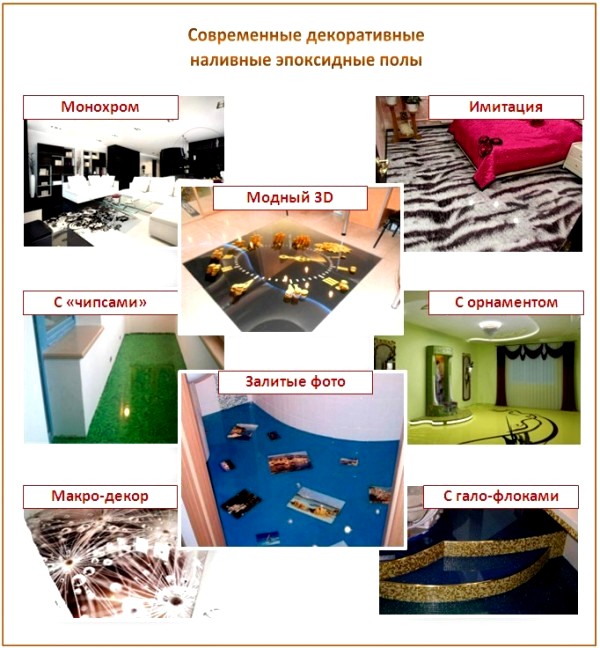
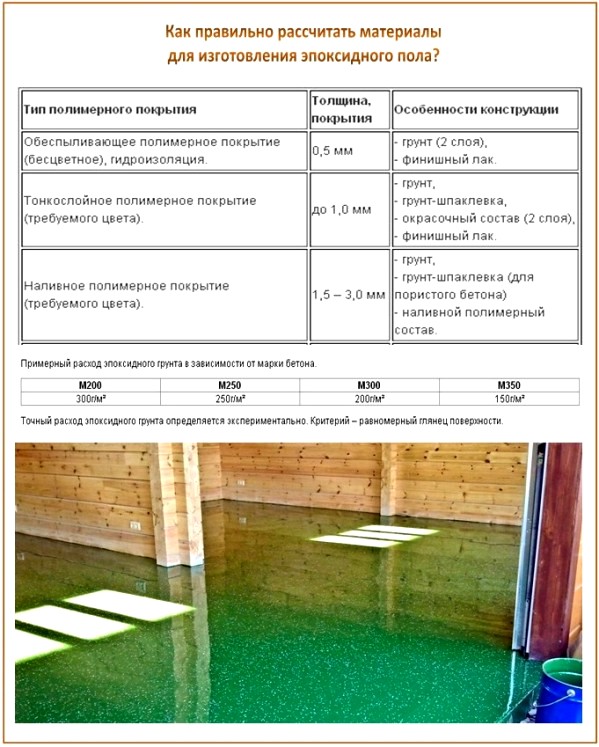
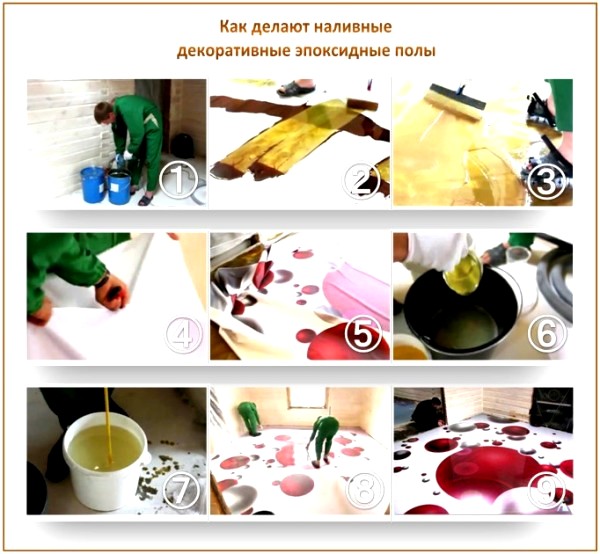
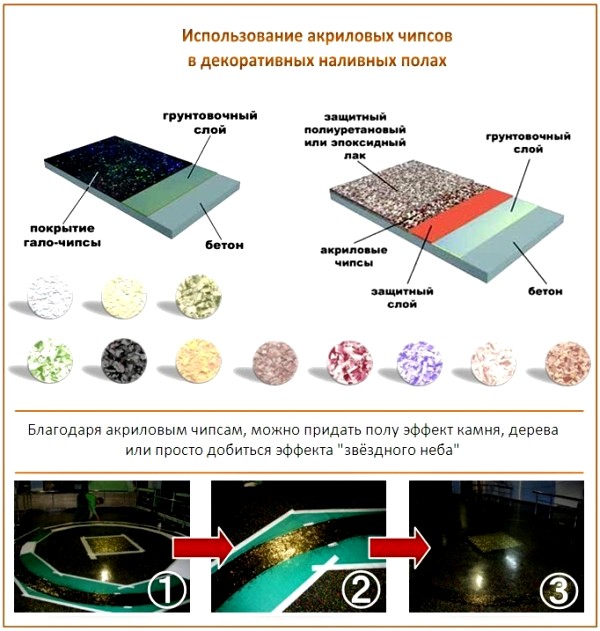
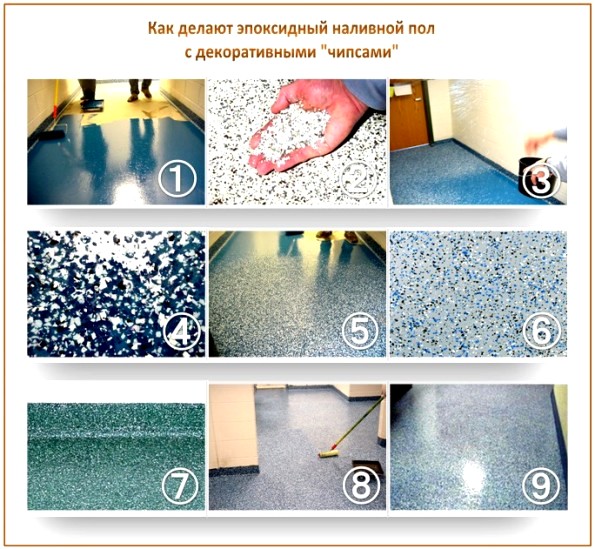
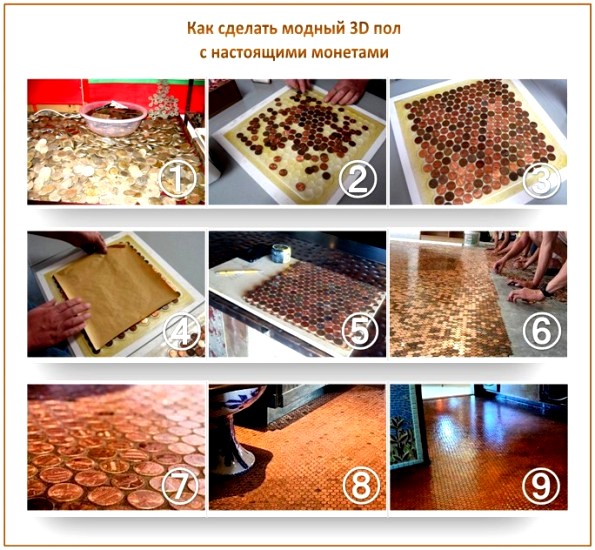
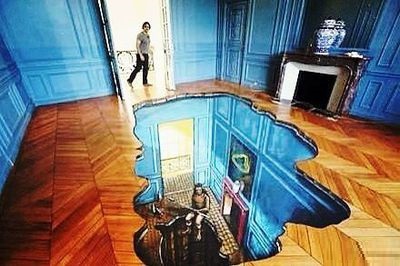
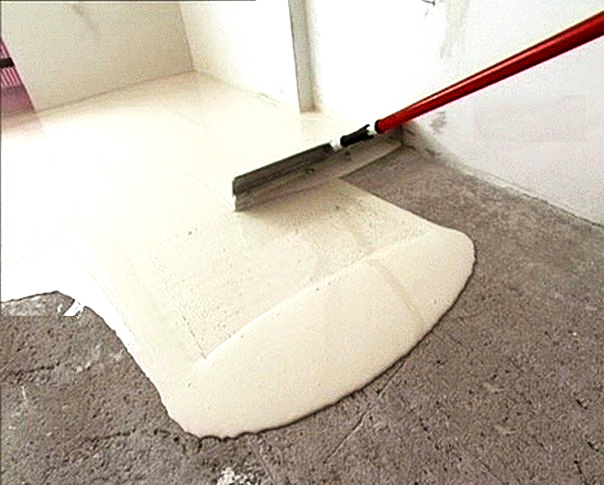

2 comments